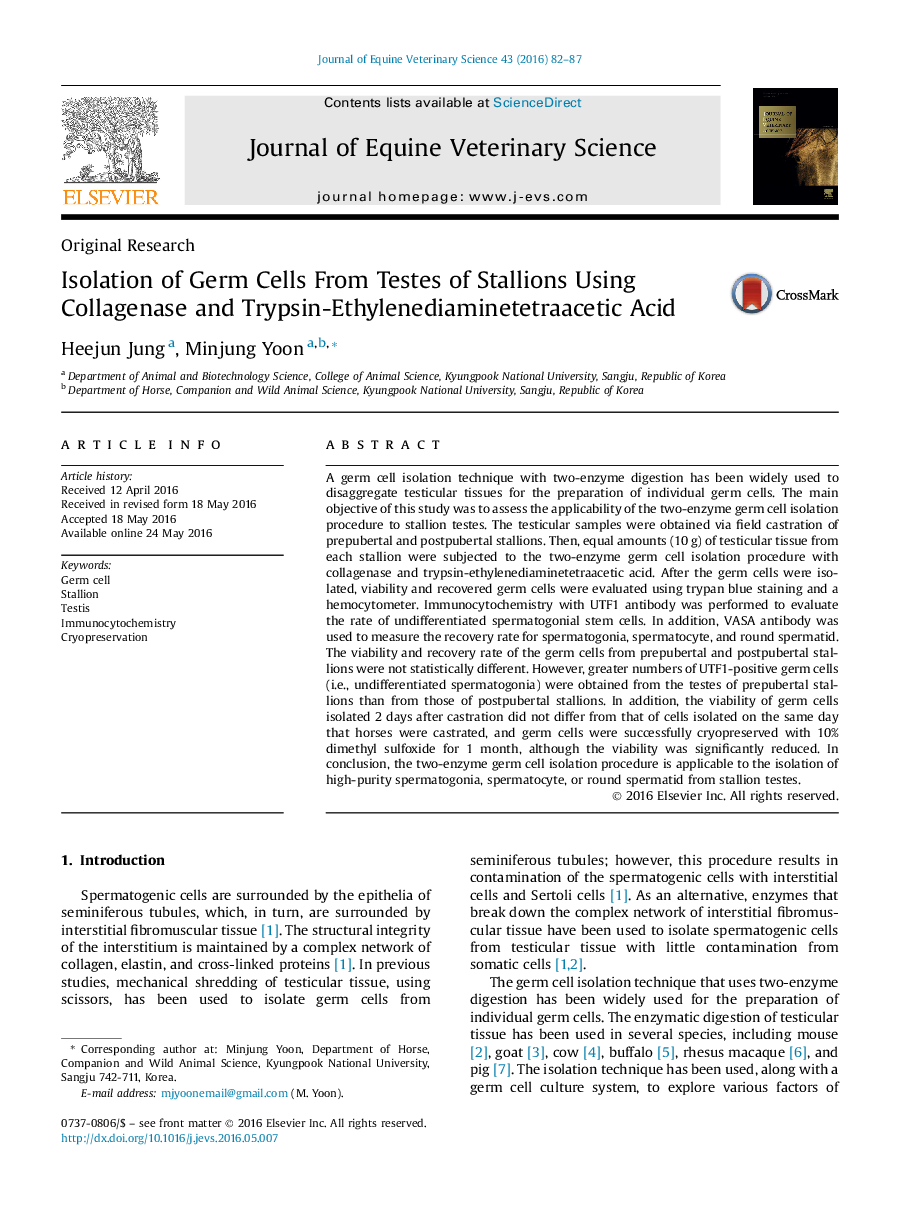| Article ID | Journal | Published Year | Pages | File Type |
|---|---|---|---|---|
| 2394528 | Journal of Equine Veterinary Science | 2016 | 6 Pages |
•The two-enzyme germ cell isolation procedure is applicable to the isolation of high-purity germ cells from stallion testes.•The viability of germ cells isolated 2 days after castration did not differ from that of cells isolated on the day of castration.•Germ cells were successfully cryopreserved with 10% dimethyl sulfoxide for 1 month, although the viability was significantly reduced.
A germ cell isolation technique with two-enzyme digestion has been widely used to disaggregate testicular tissues for the preparation of individual germ cells. The main objective of this study was to assess the applicability of the two-enzyme germ cell isolation procedure to stallion testes. The testicular samples were obtained via field castration of prepubertal and postpubertal stallions. Then, equal amounts (10 g) of testicular tissue from each stallion were subjected to the two-enzyme germ cell isolation procedure with collagenase and trypsin-ethylenediaminetetraacetic acid. After the germ cells were isolated, viability and recovered germ cells were evaluated using trypan blue staining and a hemocytometer. Immunocytochemistry with UTF1 antibody was performed to evaluate the rate of undifferentiated spermatogonial stem cells. In addition, VASA antibody was used to measure the recovery rate for spermatogonia, spermatocyte, and round spermatid. The viability and recovery rate of the germ cells from prepubertal and postpubertal stallions were not statistically different. However, greater numbers of UTF1-positive germ cells (i.e., undifferentiated spermatogonia) were obtained from the testes of prepubertal stallions than from those of postpubertal stallions. In addition, the viability of germ cells isolated 2 days after castration did not differ from that of cells isolated on the same day that horses were castrated, and germ cells were successfully cryopreserved with 10% dimethyl sulfoxide for 1 month, although the viability was significantly reduced. In conclusion, the two-enzyme germ cell isolation procedure is applicable to the isolation of high-purity spermatogonia, spermatocyte, or round spermatid from stallion testes.
